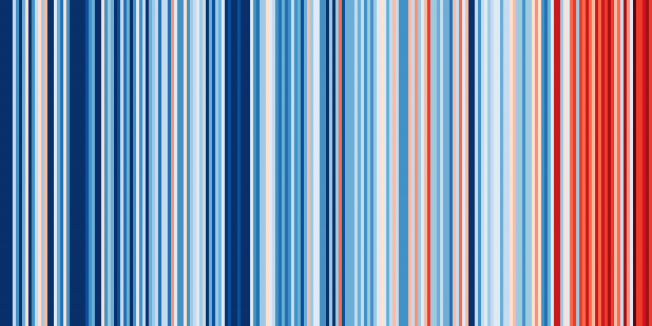Multi‐Decadal Skill Variability in Predicting the Spatial Patterns of ENSO Events
Geophysical Research Letters Wiley Open Access 51:12 (2024) e2023GL107971
Abstract:
Seasonal hindcasts have previously been demonstrated to show multi‐decadal variability in skill across the twentieth century in indices describing El‐Niño Southern Oscillation (ENSO), which drives global seasonal predictability. Here, we analyze the skill of predicting ENSO events' magnitude and spatial pattern, in the CSF‐20C coupled seasonal hindcasts in 1901–2010. We find minima in the skill of predicting the first (in 1930–1950) and second (in 1940–1960) principal components of sea‐surface temperature (SST) in the tropical Pacific. This minimum is also present in the spatial correlation of SSTs, in 1930–1960. The skill reduction is explained by lower ENSO magnitude and variance in 1930–1960, as well as decreased SST persistence. The SST skill minima project onto surface winds, leading to worse predictions in coupled hindcasts compared to hindcasts using prescribed SSTs. Questions remain about the offset between the first and second principal components' skill minima, and how the skill minima impact the extra‐tropics.Heatwave attribution based on reliable operational weather forecasts
Nature Communications Springer Nature 15:1 (2024) 4530
Abstract:
The 2021 Pacific Northwest heatwave was so extreme as to challenge conventional statistical and climate-model-based approaches to extreme weather attribution. However, state-of-the-art operational weather prediction systems are demonstrably able to simulate the detailed physics of the heatwave. Here, we leverage these systems to show that human influence on the climate made this event at least 8 [2–50] times more likely. At the current rate of global warming, the likelihood of such an event is doubling every 20 [10–50] years. Given the multi-decade lower-bound return-time implied by the length of the historical record, this rate of change in likelihood is highly relevant for decision makers. Further, forecast-based attribution can synthesise the conditional event-specific storyline and unconditional event-class probabilistic approaches to attribution. If developed as a routine service in forecasting centres, it could provide reliable estimates of human influence on extreme weather risk, which is critical to supporting effective adaptation planning.Heatwave attribution based on reliable operational weather forecasts
Nature Communications Nature Research 15:1 (2024) 4530
Abstract:
The 2021 Pacific Northwest heatwave was so extreme as to challenge conventional statistical and climate-model-based approaches to extreme weather attribution. However, state-of-the-art operational weather prediction systems are demonstrably able to simulate the detailed physics of the heatwave. Here, we leverage these systems to show that human influence on the climate made this event at least 8 [2–50] times more likely. At the current rate of global warming, the likelihood of such an event is doubling every 20 [10–50] years. Given the multi-decade lower-bound return-time implied by the length of the historical record, this rate of change in likelihood is highly relevant for decision makers. Further, forecast-based attribution can synthesise the conditional event-specific storyline and unconditional event-class probabilistic approaches to attribution. If developed as a routine service in forecasting centres, it could provide reliable estimates of human influence on extreme weather risk, which is critical to supporting effective adaptation planning.Event attribution of a midlatitude windstorm using ensemble weather forecasts
Environmental Research: Climate IOP Publishing 3:3 (2024) 035001
Abstract:
The widespread destruction incurred by midlatitude storms every year makes it an imperative to study how storms change with climate. The impact of climate change on midlatitude windstorms, however, is hard to evaluate due to the small signals in variables such as wind speed, as well as the high resolutions required to represent the dynamic processes in the storms. Here, we assess how storm Eunice, which hit the UK in February 2022, was impacted by anthropogenic climate change using the ECMWF ensemble prediction system. This system was demonstrably able to predict the storm, significantly increasing our confidence in its ability to model the key physical processes and their response to climate change. Using modified greenhouse gas concentrations and changed initial conditions for ocean temperatures, we create two counterfactual scenarios of storm Eunice in addition to the forecast for the current climate. We compare the intensity and severity of the storm between the pre-industrial, current, and future climates. Our results robustly indicate that Eunice has become more intense with climate change and similar storms will continue to intensify with further anthropogenic forcing. These results are consistent across forecast lead times, increasing our confidence in them. Analysis of storm composites shows that this process is caused by increased vorticity production through increased humidity in the warm conveyor belt of the storm. This is consistent with previous studies on extreme windstorms. Our approach of combining forecasts at different lead times for event attribution enables combining event specificity and a focus on dynamic changes with the assessment of changing risks from windstorms. Further work is needed to develop methods to adjust the initial conditions of the atmosphere for the use in attribution studies using weather forecasts but we show that this approach is viable for reliable and fast attribution systems.Assessing observational constraints on future European climate in an out-of-sample framework
npj Climate and Atmospheric Science Springer Nature 7:1 (2024) 95



